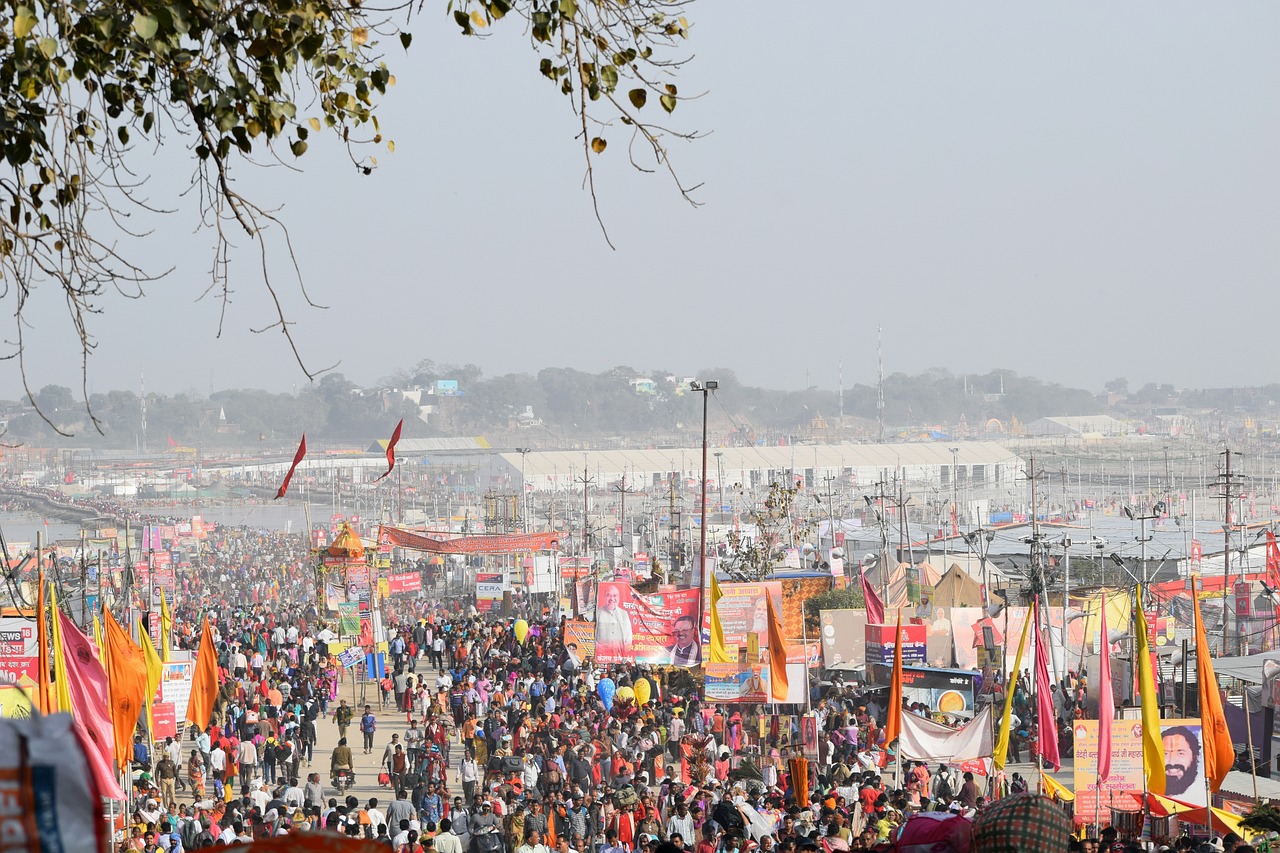The Cultural Diversity of the Kumbha Mela: A Celebration of Unity and Inclusion

The Kumbha Mela is a massive cultural and religious celebration that takes place in India every few years. It is a time for people from all walks of life to come together and share in the joy and spiritual growth that the Kumbha Mela has to offer. One of the unique aspects of the Kumbha Mela is the cultural diversity of the event, with people from all different religious traditions and practices coming together to participate.
We’ll also explore the theme of unity and inclusion that runs throughout the Kumbha Mela and how it helps to create a sense of belonging and connection among all those who attend.
The Religious Traditions of the Kumbha Mela
The Kumbha Mela is a celebration of cultural and religious diversity, with people from all different traditions and practices coming together to participate. Hindus, Buddhists, Jains, and Sikhs are all represented at the event, each with their own unique traditions and practices.
One of the most significant religious traditions at the Kumbha Mela is Hinduism, which is the dominant religion in India. Hindus believe in a complex pantheon of deities and follow a variety of rituals and practices. At the Kumbha Mela, Hindus may participate in rituals such as puja (worship), yajna (sacrifice), and darshan (seeing and being in the presence of a deity or holy person).
Buddhism is another major religion that is represented at the Kumbha Mela. Buddhists follow the teachings of the Buddha and seek to cultivate mindfulness and compassion in their daily lives. At the Kumbha Mela, Buddhists may participate in activities such as meditation, chanting, and offering alms to monks and nuns.
Jains and Sikhs are also well-represented at the Kumbha Mela. Jains follow the teachings of the Jain saints and seek to cultivate non-violence and compassion in their daily lives. At the Kumbha Mela, Jains may participate in rituals such as puja and meditation. Sikhs follow the teachings of the Guru Granth Sahib, the holy scripture of Sikhism, and seek to cultivate a strong connection to God. At the Kumbha Mela, Sikhs may participate in activities such as kirtan (devotional singing) and langar (communal meals).
The Theme of Unity and Inclusion
One of the defining characteristics of the Kumbha Mela is the theme of unity and inclusion that runs throughout the event. Despite the diverse religious traditions and practices of the people who attend, there is a deep sense of connection and belonging that unites all those who participate. This sense of unity and inclusion is fostered by the inclusive nature of the event, which is open to people of all ages, genders, and backgrounds.
The Kumbha Mela is a celebration of the common humanity that we all share, regardless of our differences. It is a reminder that, at our core, we are all connected and that we all have the potential for spiritual growth and enlightenment. This message of unity and inclusion is reflected in the diverse array of activities and practices that are offered at the event, which caters to people from all different traditions and backgrounds.
The Kumbha Mela is a unique and deeply meaningful event that celebrates the cultural and religious diversity of India. It brings people together from all walks of life and helps to create a sense of unity and inclusion among all those who attend. Whether you’re a seasoned pilgrim or simply curious about this unique celebration, the Kumbha Mela is a powerful reminder of the common humanity that we all share and the potential for spiritual growth and enlightenment that lies within us all.





